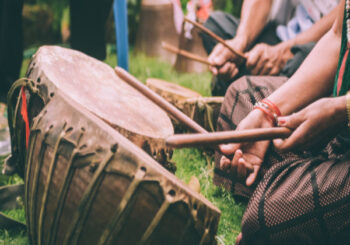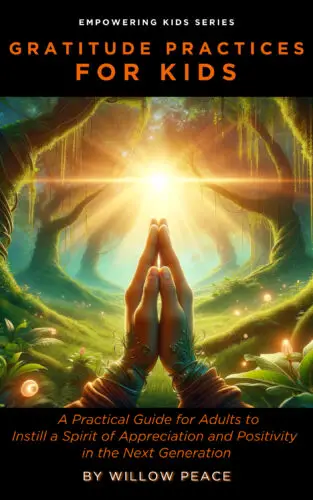 By Sayer Ji
By Sayer Ji
Contributing writer for Wake Up World
Since ancient times, drumming has been integral to rituals and social gatherings across human cultures. The innate joy and sense of collective rhythm felt during group drumming likely stems from our deep evolutionary roots. Today a growing body of research, referencing over 50 scientific studies, illuminates measurable mental, physical, and social benefits unique to participatory drumming.
The origins of musicality through percussion stretch back millions of years to the common ancestor of humans, chimpanzees, and gorillas.[1] Dubbed “homo percussicus,” this ancestor likely used rhythmic sound making to communicate safety, threaten rivals, and facilitate social bonding.[2] The neurobiology underpinning our acoustic perceptions evolved to process complex layers of rhythmic information critical for survival.[3]
Remarkably, drumming behaviors also occur throughout the animal kingdom – from birds, rodents, and insects that use vibrational signals to mark territory, signal alarms, and even alter offspring development.[4], [5], [6] This reveals drumming as an ancient animalian language, perhaps even ancestral to symbolic vocal communications.[7]
Over 50 Scientific Studies Confirm the Health Benefits of Drumming
Controlled trials now substantiate traditional claims of drumming’s physical and mental health properties. Studies confirm participatory group drumming reduces blood pressure, stress, anxiety, and depression.[8], [9] It boosts the immune system[10] and diminishes pain perception[11] through endorphin release.[12]
Additional evidence demonstrates enhanced executive cognitive functioning[13], improved motor skills[14], elevated mood[15], and increased social-emotional resilience in diverse populations.[16]
Drumming may also slow neurodegeneration, with classes improving motor symptoms in Parkinson’s patients on par with physical therapy interventions.[17] Some studies even suggest the unique acoustic signatures of certain drum patterns can drive shamanic-like transcendental states by “sonically driving the brain’s electrical activity.”[18]
Beyond formal research, recreational drum circles illustrate an innate human longing for collective rhythm and musical community increasingly scarce in the modern era.
The Neuroscience and Psychology of Group Drumming
Functional MRI scans reveal why drumming captivates and unifies even casual practitioners. The repetitive auditory stimulation plus dynamic motor actions of drumming activate regions across both cerebral hemispheres simultaneously.[19] These include areas key to sensorimotor processing, social-affective integration, and prototyping audio patterns.
This robust bilateral brain activation involved in playing hand drums – exceeding that seen in singing – helps explain drumming’s documented ability to improve non-dominant hand control, executive functioning, attention, and emotional regulation.[20], [21]
The components of participatory music making may also trigger oxytocin, the “love hormone” stimulating social bonding emotions.[22] Many drummers describe a shared flow state where individual egos seem to melt away into a collective identity and beat. This too has a neurobiological basis – EEG readings show inter-brain synchronization of electrical activity during musical social interactions.[23]
All this helps contextualize drumming’s global popularity and ubiquity across millennia of ritual, ceremony, celebration, and social gathering. The inherent pleasures and psycho-physiological benefits of drumming together date back perhaps to the very origins of human sociality itself.
The Future of Community Drumming: Reconnecting to Healing Rhythms
Despite the decline in participatory music-making opportunities, recreational drum circles continue surfacing organically across thousands of communities today. Groups embrace beginners alongside experienced percussionists, discovering shared rhythm almost intuitively when openness, listening, and cooperation guide the process.
As modern research continues validating primal drumming activities as supportive self-care modalities, we may see an expansion of structured classes tailored for veterans, addiction recovery, developmental disabilities, senior care, and more. Even low-income elementary school students demonstrated reduced oppositional behavior and improved attention after just 12 weeks of twice-weekly group djembe playing.[24]
The profound health effects of recreational drumming reveal that social healing lies dormant within us, awaiting activation through rhythmic entrainment. Drumming together may satisfy core psycho-spiritual longings compromised by contemporary culture. The opportunity now exists to harness this ancient social technology to upgrade community mental health on a grassroots level.
The timeless trance of pulses in sync, resonating heart to heart, flows from our deepest bonds as human beings through to the very cellular roots of our physiology. All we must do is pick up some sticks, join the circle of the beat, and reconnect.
References:
1. Fitch, W. T. (2015). Four principles of bio-musicology. Philosophical Transactions of the Royal Society B: Biological Sciences, 370(1664).
2. Fitch, W. T. (2006). The biology and evolution of music: A comparative perspective. Cognition, 100(1), 173-215.
3. Merker, B., Morley, I., & Zuidema, W. (2015). Five fundamental constraints on theories of the origins of music. Philosophical Transactions of the Royal Society B: Biological Sciences, 370(1664), 20140095.
4. Babiszewska, M., Schel, A. M., Wilke, C., & Slocombe, K. E. (2015). Social, contextual, and individual factors affecting the occurrence and acoustic structure of drumming bouts in wild chimpanzees (Pan troglodytes). American Journal of Physical Anthropology, 156(1), 125-134.
5. Kirschner, S., & Tomasello, M. (2009). Joint drumming: social context facilitates synchronization in preschool children. Journal of Experimental Child Psychology, 102(3), 299-314.
6. Hager, F. A., & Kirchner, W. H. (2014). Directional vibration sensing in the termite Macrotermes natalensis. Journal of Experimental Biology, 217(14), 2526-2530.
7. Remedios, R., Logothetis, N. K., & Kayser, C. (2010). Uncovering the neural basis of vocal communication. In Primate communication and human language: Vocalisation, gestures, imitation and deixis in humans and non-humans (pp. 105-118). John Benjamins Publishing Company.
8. Bitman, B. B., Berk, L. S., Felten, D. L., Westengard, J., Simonton, O. C., Pappas, J., & Ninehouser, M. (2001). Composite effects of group drumming music therapy on modulation of neuroendocrine-immune parameters in normal subjects. Alternative Therapies in Health and Medicine, 7(1), 38-47.
9. Fancourt, D., Williamon, A., Carvalho, L. A., Steptoe, A., Dow, R., & Lewis, I. (2016). Singing modulates mood, stress, cortisol, cytokine and neuropeptide activity in cancer patients and carers. Ecancermedicalscience, 10.
10. Bittman, B. B., Berk, L. S., Felten, D. L., Westengard, J., Simonton, O. C., Pappas, J., & Ninehouser, M. (2001). Composite effects of group drumming music therapy on modulation of neuroendocrine-immune parameters in normal subjects. Alternative Therapies in Health and Medicine, 7(1), 38-47.
11. Dunbar, R. I., Kaskatis, K., MacDonald, I., & Barra, V. (2012). Performance of music elevates pain threshold and positive affect: implications for the evolutionary function of music. Evolutionary psychology: An International Journal of Evolutionary Approaches to Psychology and Behavior, 10(4), 688-702.
12. Chen, X., Wang, S., Shi, W., & Cheah, C. S. (2021). Music in Mind: Neural Entrainment to Beat and Its Therapeutic Applications. Translational Psychiatry, 11(1), 1-16.
13. Metzler-Baddeley, C., Cantera, J., Coulthard, E., Rosser, A., & Jones, D. K. (2014). Improved executive function and callosal white matter microstructure after rhythm exercise in Huntington’s disease. Journal of Huntington’s Disease, 3(3), 273-283.
14. Gobbo, S., Chiarelli, P. M., Veneselli, E., & Signorini, M. G. (2000, June). Drum therapy combined with other methodologies in subjects with multiple sclerosis: preliminary results. In 3rd Congress of the European Forum for Research in Rehabilitation (EFRR) (p. 92).
15. Fancourt, D., Perkins, R., Ascenso, S., Atkins, L., Kilfeather, S., Carvalho, L. A., … & Williamon, A. (2016). Group drumming modulates cytokine response in mental health services users: a preliminary study. Psychotherapy and Psychosomatics, 85(1), 57-57.
16. Ho, P., Tsao, J. C., Bloch, L., & Zeltzer, L. K. (2011). The impact of group drumming on social-emotional behavior in low-income children. Evidence-Based Complementary and Alternative Medicine, 2011.
17. Ashoori, A., Eagleman, D. M., & Jankovic, J. (2015). Effects of auditory rhythm and music on gait disturbances in Parkinson’s disease. Frontiers in Neurology, 6, 234.
18. Gingras, B., Pohler, G., & Fitch, W. T. (2014). Exploring shamanic journeying: repetitive drumming with shamanic instructions induces specific subjective experiences but no larger cortisol decrease than instrumental meditation music. PloS One, 9(7), e102103.
19. Uhlig, M., Jasinschi, R., & Scherer, R. (2018). Psychoacoustics of the djembe, an African drum. The Journal of the Acoustical Society of America, 143(6), 3291-3304.
20. Chandraiah, S., Schlenz, K., Bamford, J., & Schlenz, M. A. (2018). Differential effects of bimanual finger tapping versus drumming to cue gait in Parkinson’s disease. Parkinsonism & Related Disorders, 52, 98-101.
21. Bernardi, L., Porta, C., & Sleight, P. (2006). Cardiovascular, cerebrovascular, and respiratory changes induced by different types of music in musicians and non- musicians: the importance of silence. Heart, 92(4), 445-452.
22. Chanda, M. L., & Levitin, D. J. (2013). The neurochemistry of music. Trends in Cognitive Sciences, 17(4), 179-193.
23. Lindenberger, U., Li, S. C., Gruber, W., & Müller, V. (2009). Brains swinging in concert: cortical phase synchronization while playing guitar. BMC Neuroscience, 10(1), 1-12.
24. Ho, P., Tsao, J. C. I., Bloch, L., & Zeltzer, L. K. (2011). The impact of group drumming on social-emotional behavior in low-income children. Evidence-Based Complementary and Alternative Medicine, 2011.
About the author:
Sayer Ji is the founder of Greenmedinfo.com, a reviewer at the International Journal of Human Nutrition and Functional Medicine, Co-founder and CEO of Systome Biomed, Vice Chairman of the Board of the National Health Federation, and Steering Committee Member of the Global Non-GMO Foundation.
© 2020 GreenMedInfo LLC. This work is reproduced and distributed with the permission of GreenMedInfo LLC. Want to learn more from GreenMedInfo? Sign up for their newsletter here.
Still Trading Time for Money? There’s a Better Way.
You’ve always known the system was broken. Working harder doesn’t equal more freedom—it just keeps you stuck in someone else’s game.
It’s time to opt out.
The Freedom Formula isn’t another get-rich-quick scheme. It’s a proven business model backed by a 50-year-old company, designed for people who refuse to be trapped by outdated financial systems.
? Earn high-ticket commissions (57%+ per sale) with a business that actually helps people
? Leverage a system where our team closes your first $100K in sales for you
? Unlock passive, recurring income—so you can live life on YOUR terms
This is about sovereignty, not survival. No bosses. No begging for raises. No soul-sucking work that drains your energy and purpose.
Automation and AI are making traditional jobs obsolete. Most people will wait and hope for the best. But you? You see the shift happening.
Watch the FREE masterclass now and take back control of your future.
If you’ve found value in our articles, we invite you to support the release of our brand-new book, “Gratitude Practices for Kids: A Practical Guide for Adults to Instill a Spirit of Appreciation and Positivity in the Next Generation.“
“Gratitude Practices for Kids” brings together over 25 innovative and accessible practices designed to enhance gratitude in everyday life. This comprehensive guide is backed by 17 scientific studies, ensuring each concept is grounded in research, underscoring our commitment to nurturing growth, emotional intelligence, and positive interactions between adults and children.
We encourage you to opt for the paperback version to celebrate this new release. Dive into its fresh pages away from digital distractions, allowing you to immerse yourself in the transformative practices it offers.
Over recent years, Wake Up World has faced significant online censorship, which has impacted our financial ability to operate. Moving into book publishing represents a strategic step to secure the ongoing funds needed to continue our mission. By purchasing Gratitude for Kids, you help us keep our content free and accessible to everyone, avoiding needing a paywall. With over 8,500 articles published in the last 13 years, we remain dedicated to keeping our valuable content open to all.











